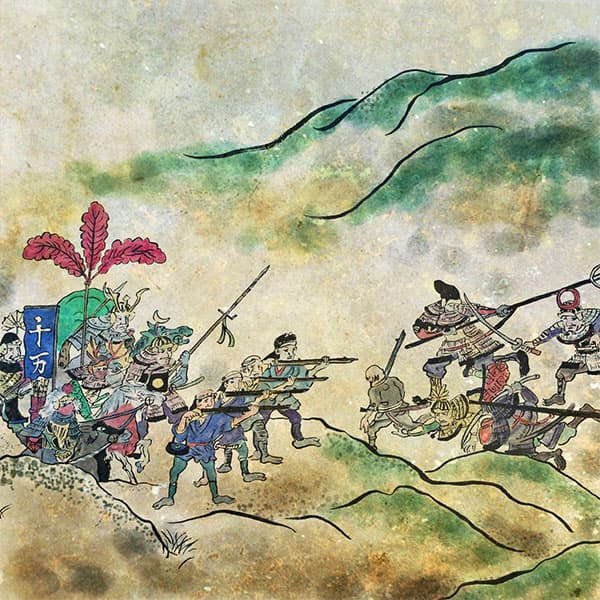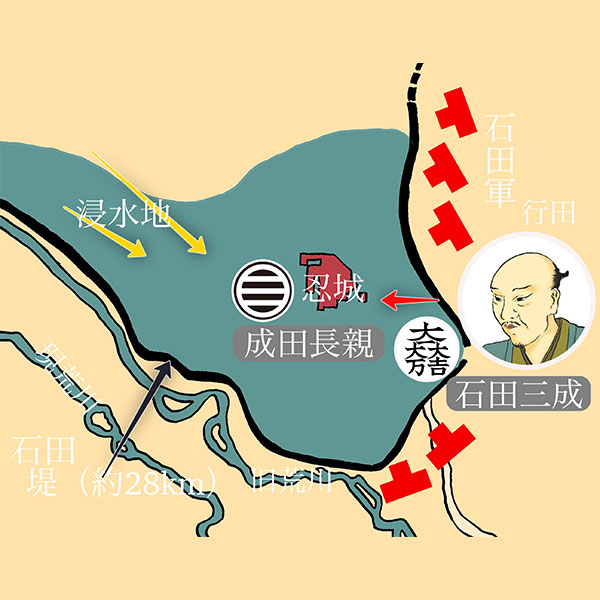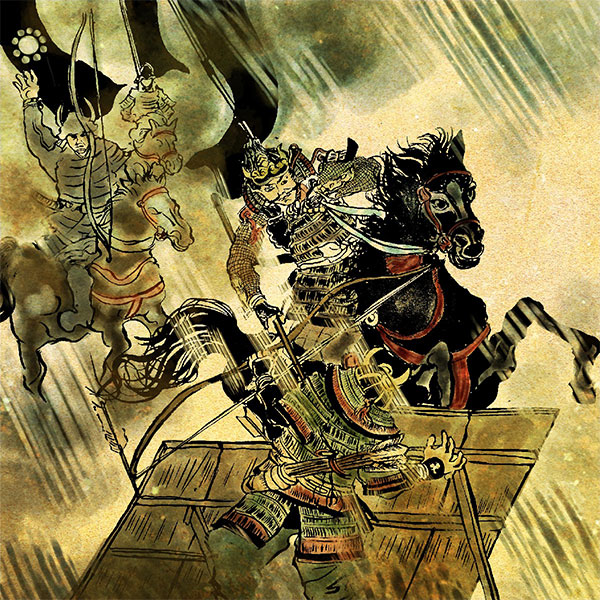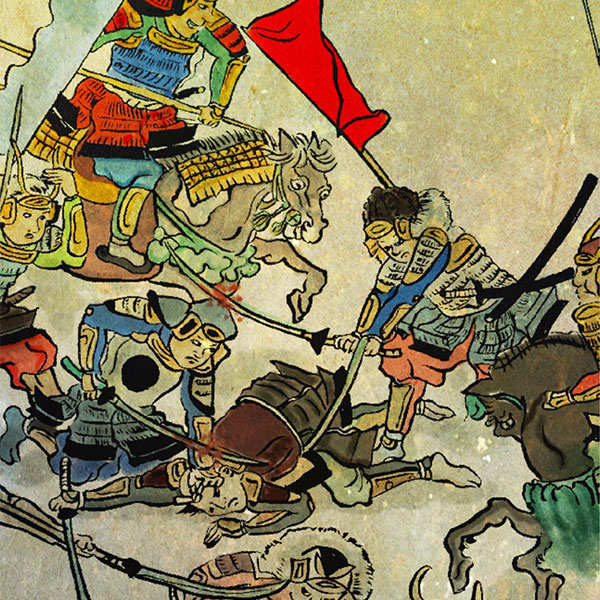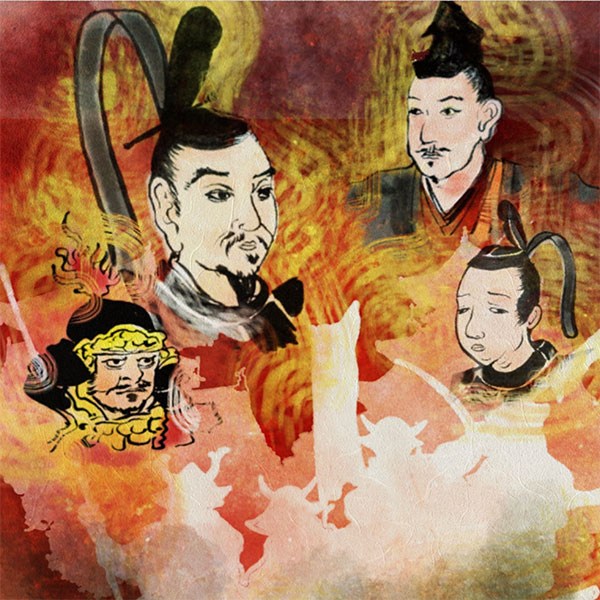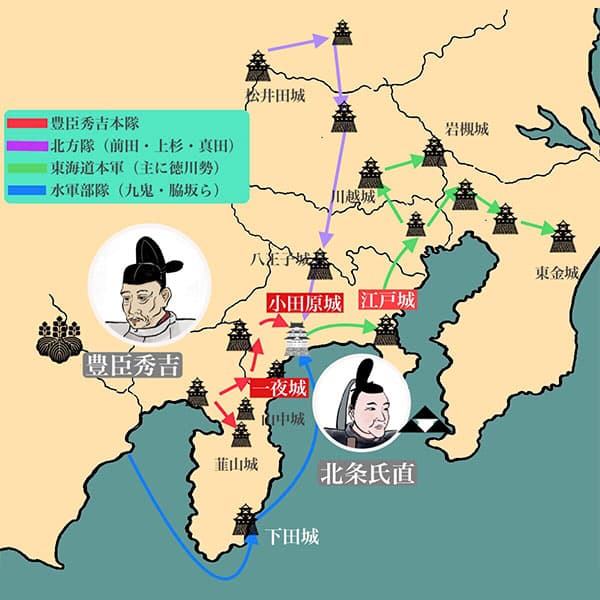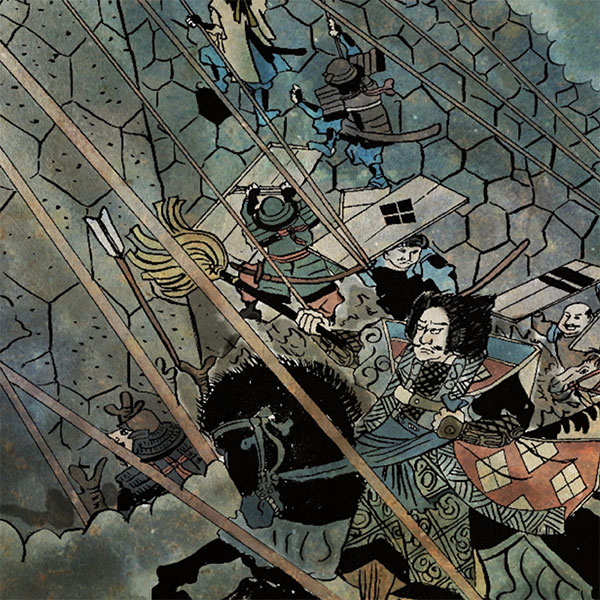Kagekatsu Uesugi (2/2)A righteous Hokuriku man
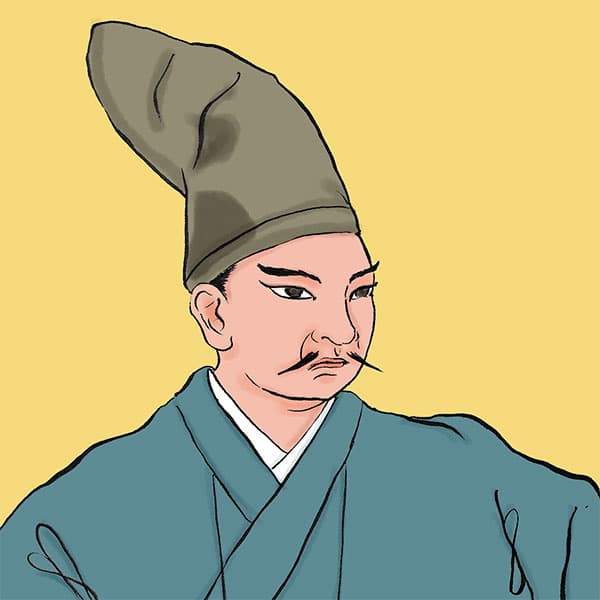
Kagekatsu Uesugi
- Article category
- biography
- name
- Uesugi Kagekatsu (1556-1623)
- place of birth
- Niigata Prefecture
- Related castles, temples and shrines

Yonezawa Castle

Tsuruga Castle
- related incident
As Ieyasu's tyrannical behavior became noticeable, the anti-Tokugawa clan who had sided with Ishida Mitsunari gradually began to rebel.
In 1600, Uesugi Kagekatsu began repairing castles within his country's territory, centered around Aizuwakamatsu.
In response, Tokugawa Ieyasu asked Kagekatsu Uesugi, who was renovating the castle and preparing for battle, to come to Kyoto and give an explanation, but Kagekatsu refused. At this time, it is said that the battle broke out because Kanetsugu Naoe's response was written to provoke Ieyasu (Naoe Letter).
Ieyasu led a large army to subjugate Kagekatsu (Aizu Conquest). However, the anti-Tokugawa family, led by Ishida Mitsunari, raised an army in Osaka, aiming to catch Tokugawa Ieyasu, who had sent out a conquest army and left Osaka.
Ieyasu, who had reached the Kanto region, returned to Osaka and confronted Mitsunari Ishida.
Kagekatsu Uesugi ended up fighting against Date Masamune and Mogami Yoshimitsu, who allied with Tokugawa Ieyasu.
However, after Ishida Mitsunari was defeated at the Battle of Sekigahara, Uesugi Kagekatsu surrendered to Tokugawa Ieyasu.
In 1601, Kagekatsu went to Kyoto with Kanetsugu Naoe, apologized to Ieyasu, and the Uesugi clan was officially allowed to continue. Although it was allowed to continue, it was reduced to 300,000 koku in Yonezawa, Dewa Province.
The Yonezawa feudal lord and his end
Although the Uesugi family was defeated in the Battle of Sekigahara, they were spared from being destroyed, but their fiefdom of about 1,000,000 koku was reduced to 300,000 koku. However, the Uesugi family did not expel their vassals, and it is said that most of their vassals moved to Yonezawa without leaving the Uesugi family.
Kagekatsu Uesugi renovated Yonezawa Castle in Dewa Province and made it his residence, concentrating on the management of the Yonezawa clan.
In 1614, when Toyotomi Hideyori and Tokugawa Ieyasu came into conflict, Uesugi Kagekatsu issued a letter of invitation to the Tokugawa family, renewing his oath of loyalty to the Tokugawa family.
When the Battle of Osaka began, he himself went to the front and fought alongside Kanetsugu Naoe.
After the Osaka Siege ended, there were almost no more battles in Japan, and from then on, they devoted themselves to the domain administration while obeying the shogunate. The Uesugi clan continued as the Yonezawa clan until the end of the Edo period, although there were some changes in stone height.
It is said that Kagekatsu Uesugi was seen as a person with a fearful personality and had a kind of charisma because he did not show his emotions or change his facial expressions.
Just as his uncle and previous head of the family, Uesugi Kenshin, was a lover of swords, Kagekatsu Uesugi is also said to have had an aesthetic sense for swords. The lower back (Uesikagekatsusanjugokoshi) is left intact.
In 1623, Uesugi Kagekatsu passed away at Yonezawa Castle at the age of 69. Kagekatsu was buried at Hoon-ji Temple along with his vassals who died.
Kagekatsu Uesugi's relationship
- Untoan
- Untoan is a temple located in Minamiuonuma City, Niigata Prefecture. According to "Nihon Dojo Rentoroku," there is a tradition that during the Nara period, Fujiwara Senshini, the wife of Fujiwara Fuhito, established a hermitage and became the founder.
It is said that in the Muromachi period, Norizane Uesugi, a Kanto kanrei based in Naoetsu, invited Kenso Keiji, the successor of Ketsudo Yoshikatsu, in 1430 to rebuild the temple as a Zen temple.
In the late Sengoku period, Kagekatsu Uesugi and his vassal Kanetsugu Naoe are said to have spent their childhoods at Untoan, where they learned from Tsuten Zontatsu (older brother of the 13th chief priest, Masakage Nagao) and others. - Sakado Castle/Zenibuchi Park, Yonezawa Castle/Matsugamisaki Park
- Zenibuchi Park is located where Sakado Castle used to be. The ``Statue of Kiheiji and Yoroku'' was installed here as a statue of Kagekatsu Uesugi and Kanetsugu Naoe. The original author of the novel ``Tenchijin'', Masashi Hisaka, wrote the title ``Kiheiji and Yoroku'' on the pedestal, and Kimiya Masako, a writer of Sengoku emakiri, supervised the original drawing of the bronze statue.
In addition, bronze statues of Kagekatsu Uesugi and Kanetsugu Naoe were erected in Matsugamisaki Park, where Yonezawa Castle was located, to commemorate the drama ``Tenchijin''. - Mausoleum of the Uesugi family, lord of Yonezawa domain
- The Uesugi Mausoleum is the burial place of Uesugi Kenshin and the Uesugi clan, the lords of the Yonezawa domain, located in Yonezawa City, Yamagata Prefecture.
When Uesugi Kenshin passed away at Kasugayama Castle in Echigo Province in 1578, the Uesugi family coated his remains with lacquer and buried them in armor. When his successor, Kagekatsu Uesugi, was ordered by Toyotomi Hideyoshi to relocate to Aizu, it is said that Kenshin's coffin was also moved from Echigo to Aizu and a temporary hall was built there to enshrine him.
Furthermore, after the defeat at the Battle of Sekigahara in 1601, the Uesugi family was moved to Yonezawa territory, and Kenshin's body was moved again. Kagekatsu built a temple in the main enclosure of Yonezawa Castle, and Kenshin was enshrined there.
When Kagekatsu died in 1623, he was buried at the current Uesugi family mausoleum, where successive feudal lords were also buried. In the Meiji period, Yonezawa Castle was dismantled and Kenshin's coffin was also moved due to the nationwide castle abolition ordinance. The current Uesugi Mausoleum is located to the northwest of Yonezawa Castle, and it is said that it was built as a temporary evacuation site for Kenshin's coffin in the event of an incident at Yonezawa Castle.
In 1984, it was designated as a national historic site under the name ``Yonezawa Domain Lord Uesugi Family Graveyard''.
Aizuwakamatsu Castle
Aizuwakamatsu Castle (also known as Wakamatsu Castle) is a castle located in Aizuwakamatsu City, Fukushima Prefecture. It is also known as Tsuruga Castle, but since there is another castle with the same name, it is generally called Aizuwakamatsu Castle.
It is said that Kurokawa Castle was originally built by the Ashina clan that ruled this area. Later, when the Ashina clan fell and the Toyotomi clan came into power, the castle came under the control of Ujisato Gamo, and the castle's name was changed from Kurokawa to Wakamatsu.
When Ujisato Gamo died and a commotion broke out within the Gamo family, Toyotomi Hideyoshi transferred Kagekatsu Uesugi from Echigo to Aizu.
After that, the Battle of Sekigahara occurred, and the Uesugi family, who sided with the western army led by Ishida Mitsunari, was defeated and moved to Yonezawa, Dewa Province.
Throughout the Edo period, it was ruled by Masayuki Hoshina, the younger brother of the third shogun Iemitsu Tokugawa, and from then on, the Aizu Matsudaira family (name changed from Hoshina) ruled until the Meiji period. Just before the start of the Meiji era, Wakamatsu Castle was the site of a fierce battle during the Aizu War, and due to the severe damage it suffered, it was abandoned for a while and then dismantled.
By around 1960, the castle tower had been restored and was designated as a national historic site under the name Wakamatsu Castle Ruins. In 2006, it was selected as one of Japan's top 100 castles.
The Tsuruga Castle Cherry Blossom Festival is held at Wakamatsu Castle from April to May, and 1,000 cherry trees are illuminated every year, making it a fun event for citizens.
Yonezawa Castle
Yonezawa Castle is a castle that existed in Yonezawa City, Yamagata Prefecture from the Middle Ages to the early modern period.
It was the headquarters of the Date clan during the late Sengoku period, and was also the birthplace of Date Masamune.
The Western army was defeated in the Battle of Sekigahara, and the Uesugi clan, which had ruled Aizuwakamatsu Castle, had its territory reduced and was transferred to Yonezawa. From then on, it became the residence of the Uesugi clan of the Yonezawa domain until the Meiji Restoration.
When the Edo period ended and the Meiji period began, all the castle buildings were demolished in 1873, and the following year, in 1874, the castle ruins were opened to the public as Matsugamisaki Park.
Today, the castle ruins are popularly known as Matsugamine Park, a park with a water moat. Among them, the Honmaru ruins are the precincts of Uesugi Shrine, and the Ninomaru ruins include the Yonezawa City Uesugi Memorial Hall (formerly the residence of Earl Uesugi).
- Yonezawa Uesugi Festival
- Yonezawa Uesugi Festival is a festival held every year from late April to early May in Yonezawa City, Yamagata Prefecture.
It has been held since before the war, and is popularly known as the ``Prefectural Shrine (Uesugi Shrine) Festival'' or ``Castle Festival,'' and is a traditional event that heralds the arrival of spring in the snowy country of Yonezawa.
April 29th is the anniversary of Kenshin Uesugi's death, and the opening ceremony and parade will be held on this day.
In addition, there will be reenactments of the Takeno ceremony, a ritual to invite the military's guardian deity that Uesugi Kenshin always performed before a battle, the warrior procession, and the Battle of Kawanakajima.
Reread the article by Kagekatsu Uesugi
- related incident

- WriterTomoyo Hazuki(Writer)I have loved history and geography since my student days, and have enjoyed visiting historical sites, temples and shrines, and researching ancient documents. He is especially strong in medieval Japanese history and European history in world history, and has read a wide range of things, including primary sources and historical entertainment novels. There are so many favorite military commanders and castles that I can't name them, but I especially like Hisashi Matsunaga and Mitsuhide Akechi, and when it comes to castles, I like Hikone Castle and Fushimi Castle. Once you start talking about the lives of warlords and the history of castles, there's a side of you that can't stop talking about them.



